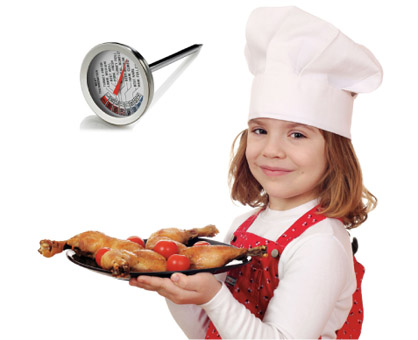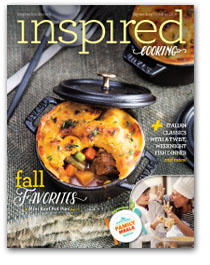
Americans eat 8 billion chickens a year. Chicken is a healthy choice. It’s a great source of protein and low in fat. But like any meat, if not handled properly, chicken can cause foodborne illness. Following food safety guidelines is important for reducing risk of illness.
Cross Contamination
Cross-contamination can happen at any point in the handling and cooking process. Starting at the store, make sure all packages containing raw meat are sealed tight and not leaking. Keep these packages in a separate plastic bag so that other food or reusable bags are not contaminated. Be sure to wash hands thoroughly, and clean utensils and appliances that come in contact with raw chicken, such as a cutting board or knife. Don’t store raw chicken on the middle shelf of the refrigerator as juices can drip down and taint other food. Bacteria can survive on surfaces for weeks, even months, so be sure to always wipe down surfaces with soap and disinfectants.
Washing
Chicken should never be washed. Washing raw meat, and particularly chicken, promotes cross-contamination. Juices can spread bacteria up to three feet away. Washing poultry will only increase risk of foodborne illness.
Thawing
It’s important to keep raw chicken out of what the United States Food Safety and Inspection Service (FSIS) calls “The Food Danger Zone.” Bacteria grow most rapidly between 40° and 140°, doubling in number in as little as 20 minutes. Thawing correctly is important to ensure food safety. Frozen chicken should be thawed in the refrigerator overnight, or in cold water in a container, not in the sink. Be sure that the chicken is not above 41° for more than four hours.
Cooking
To ensure you’ve reduced your risk of foodborne illness, cook chicken to an internal temperature of 165°. Use a thermometer to test the temperature and be sure that it is calibrated correctly. Digital thermometers are the easiest to calibrate and read.
Reheating
Not reheating chicken to the proper temperature can also lead to foodborne illness. Leftovers should be cooled quickly and put in the refrigerator. When reheating, bring the internal temperature to 165°. It’s important to use a thermometer when reheating leftovers, especially when using a microwave, because the meat may not warm up evenly.




 Quick Meal Ideas
Quick Meal Ideas